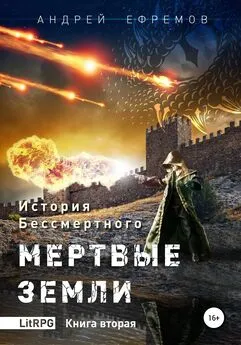Андрей Журавлёв - Сотворение Земли. Как живые организмы создали наш мир
- Название:Сотворение Земли. Как живые организмы создали наш мир
- Автор:
- Жанр:
- Издательство:Альпина нон-фикшн
- Год:2018
- Город:Москва
- ISBN:978-5-9614-5294-5
- Рейтинг:
- Избранное:Добавить в избранное
-
Отзывы:
-
Ваша оценка:
Андрей Журавлёв - Сотворение Земли. Как живые организмы создали наш мир краткое содержание
О том, как формировалась наша планета — такая, какой мы ее знаем, — книга Андрея Журавлева, палеонтолога, доктора биологических наук, профессора кафедры биологической эволюции биологического факультета МГУ.
Сотворение Земли. Как живые организмы создали наш мир - читать онлайн бесплатно ознакомительный отрывок
Интервал:
Закладка:
Ghisalberti M. et al. 2014. Canopy flow analysis reveals the advantage of size in the oldest communities of multicellular eukaryotes // Current Biology , 24, 1–5. DOI: 10.1016/j.cub.2013.12.017
Hardisty D. S. et al. 2017. Perspectives on Proterozoic surface ocean redox from iodine contents in ancient and recent carbonate // Earth and Planetary Science Letters , 463, 159–70.
Hood A. v. S., Wallace M. W. 2015. Extreme ocean anoxia during the Late Cryogenian recorded in reefal carbonates of Southern Australia // Precambrian Research , 261, 96–111.
Hoyal Cuthill J. F., Conway Morris S. 2014. Fractal branching organizations of Ediacaran rangeomorph fronds reveal a lost Proterozoic body plan // Proceedings of the National Academy of Sciences of the USA, 111, 13122–6.
Huntley J. W., Xiao S., Kowalewski M. 2006. 1.3 Billion years of acritarch history: An empirical morphospace approach // Precambrian Research , 144, 52–68.
Igisu M. et al. 2014. FTIR microspectroscopy of Ediacaran phosphatised microfossils from the Doushantuo Formation, Weng’an, South China // Gondwana Research , 25, 1120–38.
Ishikawa T. et al. 2011. Irreversible change of the oceanic carbon cycle in the earliest Cambrian: High-resolution organic and inorganic carbon chemostratigraphy in the Three Gorges area, South China // Precambrian Research , 225, 190–208.
Ivantsov A. Yu., Fedonkin M. A. 2002. Conulariid-like fossil from the Vendian of Russia: A metazoan clade across the Proterozoic/Palaeozoic boundary // Palaeontology, 45, 1219–29.
Knoll A. H., Walter M. R., Narbonne G. M., Christie-Blick N. 2006. The Ediacaran Period: a new addition to the geologic time scale // Lethaia, 39, 13–30.
Laflamme M., Xiao S., Kowalewski M. 2009. Osmotrophy in modular Ediacara organisms // Proceedings of the National Academy of Sciences of the USA, 1060, 14438–43.
Liu A. G., McIlroy D., Matthews J. J., Brasier M. D. 2012. A new assemblage of juvenile Ediacaran fronds from the Drook Formation, Newfoundland // Journal of the Geological Society of London , 169, 395–403.
Lloyd S. J. et al. 2012. Sustained low marine sulfate concentrations from the Neoproterozoic to the Cambrian: Insights from carbonates of northwestern Mexico and eastern California // Earth and Planetary Science Letters , 339–340, 79–94.
McKenzie J. A., Vasconcelos C. 2009. Dolomite Mountains and the origin of dolomite rock of which they mainly consist: historical developments and new perspective // Sedimentology , 56, 205–19.
Mentel M. et al. 2014. Of early animals, anaerobic mitochondria, and a modern sponge // Bioessays, 36, 924–32.
Mitchell E. G. et al. 2015. Reconstructing the reproductive mode of an Ediacaran macro-organism // Nature , 524, 343–6.
Notholt A. J. G., Jarvis I., eds. 1990. Phosphorite Research and Development. London: Geol. Soc., 326 p. ( Geological Society of London, Special Publication , 52).
Poulton S. W., Fralick P. W., Canfield D. E. 2010. Spatial variability of oceanic redox structure 1.8 billion years ago // Nature Geoscience , 7, 3, 486–90.
Pratt B. 1998. Molar-tooth structure in Proterozoic carbonate rocks: Origin from synsedimentary earthquakes, and implications for the nature and evolution of basins and marine sediment // Geological Society of America Bulletin , 110, 1028–45.
Reinhard C. T. et al. 2017. Evolution of the global phosphorus cycle // Nature , 541, 386–9.
Roberson A. L., Roadt J., Halevy I., Kasting J. F. 2011. Greenhouse warming by nitrous oxide and methane in the Proterozoic Eon // Geobiology , 9, 313–20.
Seilacher A. 1992. Vendobionta and Psammocorallia: Lost constructions of the Precambrian evolution // Journal of the Geological Society of London, 149, 607–13.
Shen B. et al. 2016. Molar tooth carbonates and benthic methane fluxes in Proterozoic ocean // Nature Communications , 7, 10317. DOI: 10.1038/ncomms10317.
Shields-Zhou G., Och L. 2011. The case for a Neoproterozoic Oxygenation Event: Geochemical evidence and biological consequences // GSA Today , 21, 4–11.
Singer A., Plotnick R., Laflamme M. 2013. Experimental fluid mechanics of an Ediacaran frond // Palaeontologia Electronica, 15, 2 (19A), 14 p. palaeo-electronica.org/content/2012-issue-2-articles/255-frond-biomechanics
Sperling E. A., Knoll A. H., Girgius P. R. 2015. The ecological physiology of Earth’s second oxygen revolution // Annual Review of Ecology, Evolution, and Systematics , 46, 215–35.
Sperling E. A. et al. 2015. Statistical analysis of iron geochemical data suggests limited late Proterozoic oxygenation // Nature , 523, 451–4.
Tostevin R. et al. 2016. Low-oxygen waters limited habitable space for early animals // Nature Communications , 7, 12818. DOI: 10.1038/ncomms12818
Vasconcelos C. et al. 2006. Lithifying microbial mats in Lagoa Vermelha, Brazil: modern Precambrian relics? // Sedimentary Geology , 185, 175–83.
Wallace M. W. et al. 2015. The Cryogenian Balcanoona reef complexes of the Northern Flinders Ranges: Implications for Neoproterozoic ocean chemistry // Palaeogeography, Palaeoclimatology, Palaeoecology , 417, 320–36.
Wood R. A., Grotzinger J. P., Dickson J. A. D. 2002. Proterozoic modular biomineralized metazoan from the Nama Group, Namibia // Science, 296, 2383–6.
Wood R. A. et al. 2015. Dynamic redox conditions control late Ediacaran metazoan ecosystems in the Nama Group, Namibia // Precambrian Research , 261, 252–71.
Wood R., Ivantsov A. Yu., Zhuravlev A. Yu. 2017. First macrobiota biomineralisation was environmentally triggered // Proceedings of the Royal Society of London B, 284, 20170059. DOI: 10.1098/rspb.2017.0059.
Wood R. A., Zhuravlev A. Yu., Sukhov S. S., Zhu M. & Zhao F. 2017. Demise of Ediacaran dolomitic seas marks widespread biomineralization on the Siberian Platform // Geology, 45, 27–30.
Wright D. T. 1999. The role of sulphate-reducing bacteria and cyanobacteria in dolomite formation in distal ephemeral lakes of the Coorong region, South Australia // Sedimentary Geology , 126, 147–57.
Xiao S., Knoll A. H., Yuan X., Pueschel C. M. 2004. Phosphatized multicellular algae in the Neoproterozoic Doushantuo Formation, China, and the early evolution of florideophyte red algae // American Journal of Botany , 91, 214–27.
Xiao S. et al. 2005. A uniquely preserved Ediacaran fossil with direct evidence for a quilted bodyplan // Proceedings of the National Academy of Sciences of the USA, 102, 10227–32.
Xiao S., Yuan X., Steiner M., Knoll A. H. 2002. Macroscopic carbonaceous compressions in a terminal Proterozoic shale: A systematic reassessment of the Miaohe biota, South China // Journal of Paleontology , 76, 347–76.
Yin Z. et al. 2013. Early embryogenesis of potential bilaterian animals with polar lobe formation from the Ediacaran Weng’an Biota, South China // Precambrian Research , 225, 44–57.
Yin Z., Zhu M., Bottjer D. J., Zhao F., Tafforeau P. 2016. Meroblastic cleavage identifies some Ediacaran Doushantuo (China) embryo-like fossils as metazoans // Geology, 44, 735–8.
Yuan X., Chen Z., Xiao S., Zhou C., Hua H. 2011. An early Ediacaran assemblage of macroscopic and morphologically differentiated eukaryotes // Nature , 470, 390–3.
Zhu M., Zhuravlev A. Yu., Wood R. A., Zhao F., Sukhov S. S. 2017. A deep root for the Cambrian Explosion: Implications of new bio- and chemostratigraphy from the Siberian Platform // Geology. DOI: 10.1130/G38865.1.
Zhuravlev A. Yu. 1993. Were Ediacaran Vendobionta multicellulars? // Neues Jahrbuch für Geologie und Paläontologie, Abhandlungen, 190, 299–314.
Zhuravlev A. Yu., Wood R. A. 2008. Eve of biomineralization: Controls on skeletal mineralogy // Geology , 36, 923–6.
Zhuravlev A. Yu., Gámez Vintaned J. A., Ivantsov A. Yu. 2009. First finds of problematic Ediacaran fossil Gaojiashania in Siberia and its origin // Geological Magazine , 146, 775–80.
Zhuravlev A. Yu., Wood R. A., Penny A. M. 2015. Ediacaran skeletal metazoan revealed to be complex lophophorate // Proceedings of the Royal Society of London B, 282, 20151860. DOI: 10.1098/rspb.2015.1860.
Ефремoв И. A. Тафономия и геологическая летопись. — М.: Изд-во АН СССР, 1950. (Тр. ПИН АН СССР. Т. 24. Вып. 1).
Журавлев A. Ю. Ранняя история Metazoa — взгляд палеонтолога // Журнал общей биологии. 2014. Т. 75. № 6. С. 411–65.
Иванцов A. Ю., Журавлев A. Ю., Kрaсилoв В. A., Легутa A. В., Meльникoвa Л. M., Урбанек А., Ушaтинскaя Г. T., Малаховская Я. Е. Уникальные синские местонахождения раннекембрийских организмов. Сибирская платформа. — М.: Наука, 2005. (Тр. ПИН РАН. Т. 284).
Aldridge R. J., Briggs D. E. G. 1986. Conodonts // Hoffman A., Nitecki M. H., eds. Problematic Fossil Taxa. New York: Oxford Univ. Press; Oxford: Clarendon Press, p. 227–39. ( Oxford Monographs on Geology and Geophysics , 5).
Aldridge R. J. et al. 2006. Bromalites from the Soom Shale Lagerstätte (Upper Ordovician) of South Africa: Palaeoecological and palaeobiological implications // Palaeontology , 49, 857–71.
Babcock L. E., Robison R. A. 1989. Preference of Palaeozoic predators // Nature, 337, 695–6.
Bailey J. V., Corsetti F. A., Bottjer D. J., Marenco K. N. 2006. Microbially-mediated environmental influences on metazoan colonization of matground ecosystems: Evidence from the Lower Cambrian Harkless Formation // Palaios, 21, 215–26.
Bambach R. K., Bush A. M., Erwin D. H. 2007. Autecology and the filling of ecospace: Key metazoan radiations // Palaeontology, 50, 1–22.
Barskov I. S., Boiko M. S., Konovalova V. A., Leonova T. B., Nikolaeva S. V. 2008. Cephalopods in the marine ecosystems of the Paleozoic // Paleontological Journal , 42 (11), 1167–1284.
Bottjer D. J., Hagadorn J. W., Dornbos S. Q. 2000. The Cambrian substrate revolution // GSA Today, 10, 1–7.
Butterfield N. J. 2011. Animals and the invention of the Phanerozoic Earth system // Trends in Ecology and Evolution , 26, 81–7.
Cong P. et al. 2014. Brain structure resolves the segmental affinity of anomalocaridid appendages // Nature, 513, 538–42.
Cooper R. A., Rigby S., Loydell D. K., Bates D. E. B. 2012. Palaeoecology of the Graptoloidea // Earth-Science Reviews , 112, 23–41.
Daley A. C., Edgecombe G. D. 2014. Morphology of Anomalocaris canadensis from the Burgess Shale // Journal of Paleontology , 88, 68–91.
Danovaro R. et al. 2010. The first metazoan living in permanently anoxic conditions // BMC Biology , 8, 30. DOI: 10.1186/1741-7007-8-30
Читать дальшеИнтервал:
Закладка:
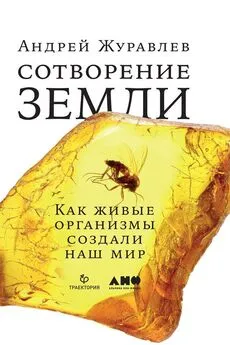

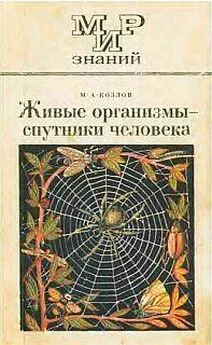
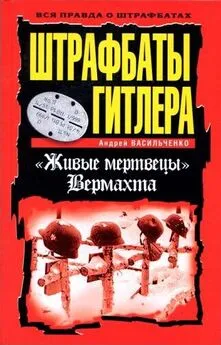
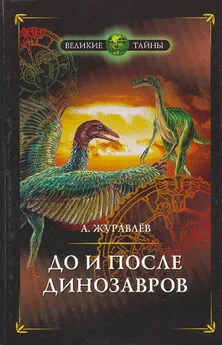
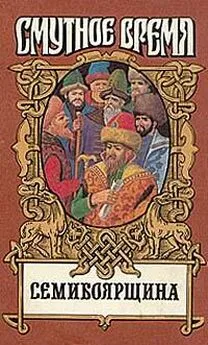
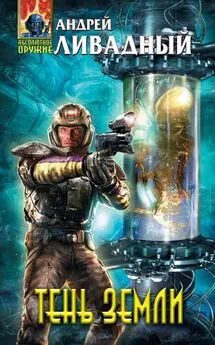
![Андрей Максимов - Самоубийство Земли [Повести и рассказы]](/books/1059571/andrej-maksimov-samoubijstvo-zemli-povesti-i-rass.webp)
